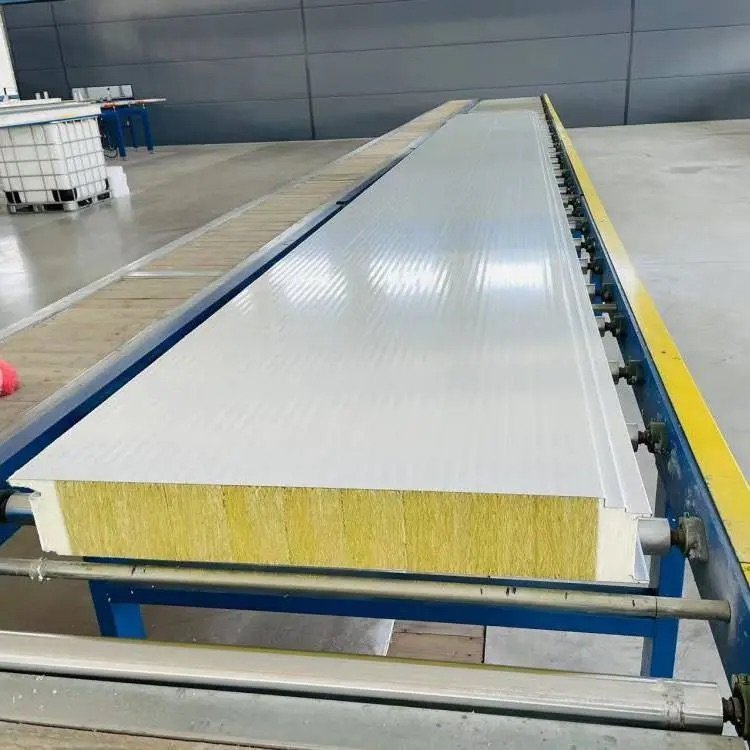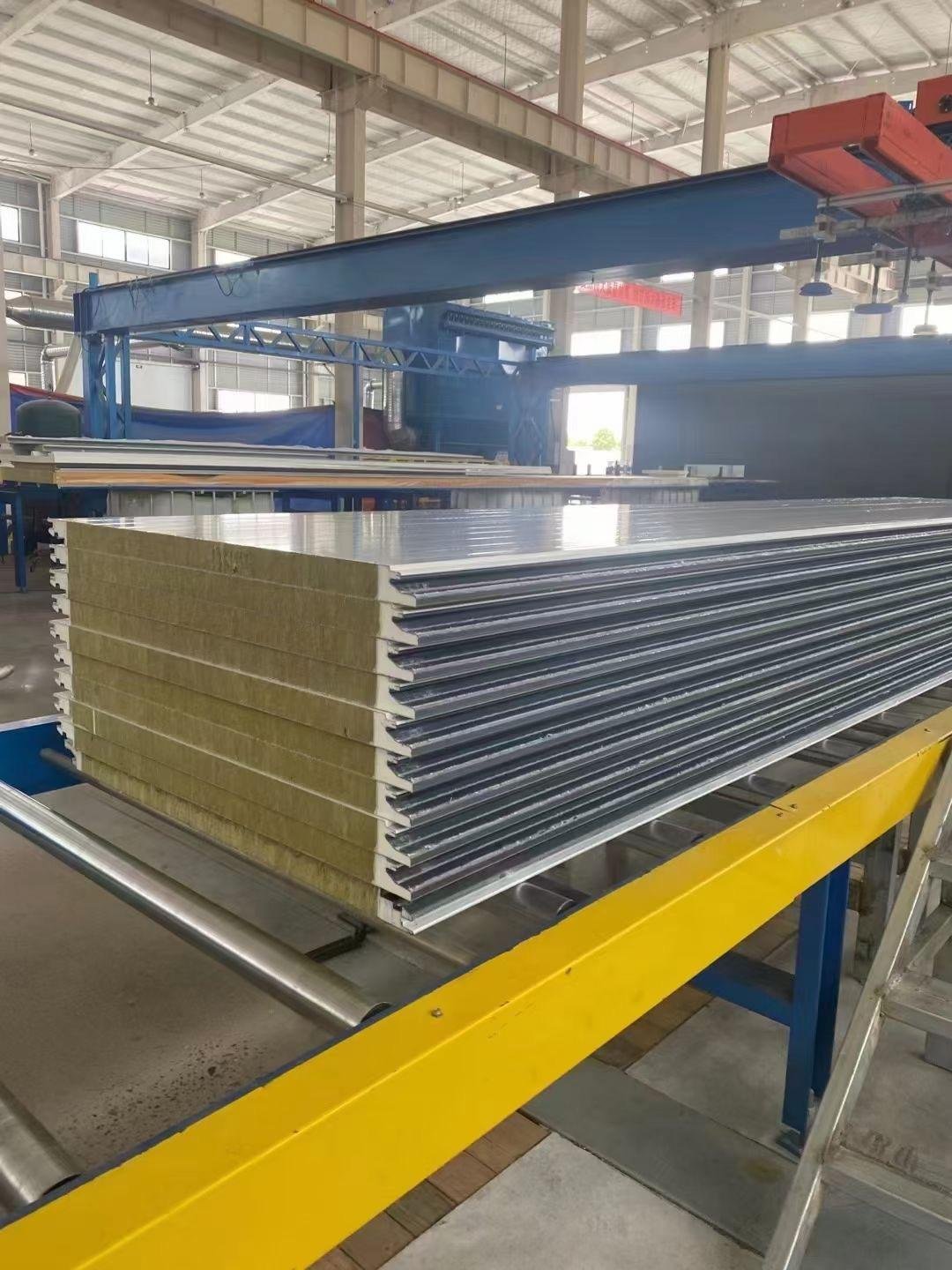
EPS sandwich panels have revolutionized how we achieve thermal insulation in buildings. These panels feature an EPS foam center and robust cement layers, making them highly effective at preventing heat transfer. As the demand for energy-saving materials increases, EPS panels are becoming increasingly popular. The market is projected to grow from $6.5 billion in 2023 to $11.2 billion by 2032, highlighting their effectiveness in energy conservation and eco-friendliness. A 4-inch EPS panel boasts an impressive R-value of 14, outperforming traditional 2×4 or 2×6 walls. By utilizing EPS panels, we can enhance thermal insulation, retain heat, and reduce costs over time.
Key Takeaways
EPS sandwich panels keep heat in or out very well. Their R-values are over 20, better than regular walls.
Using EPS panels can cut energy costs. They reduce the need for heating and cooling, saving energy.
EPS foam does not let heat pass easily. It keeps rooms comfy and helps make buildings greener.
EPS panels resist water and last a long time. They work well even in bad weather.
Picking EPS panels meets building rules and keeps things safe. They also help build in an eco-friendly way.
High R-Value and Thermal Resistance
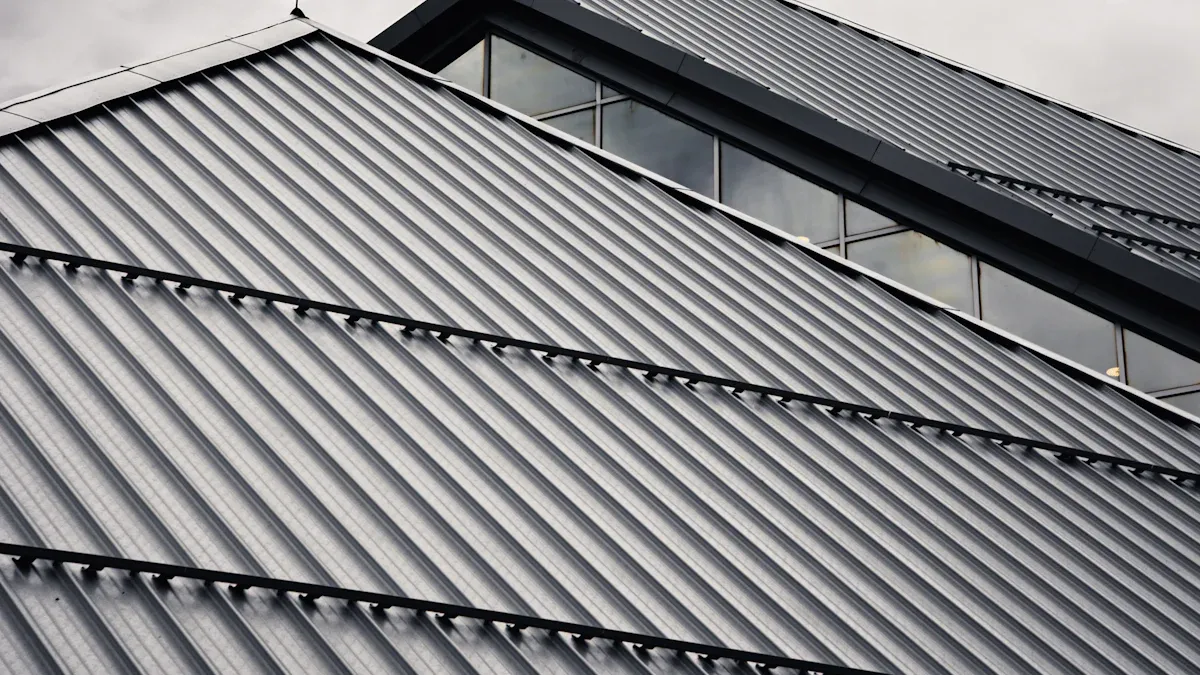
Why R-value matters in insulation
R-value shows how well a material blocks heat. Higher R-values mean better insulation and energy savings. Good insulation keeps buildings warm or cool as needed. Experts say R-value helps lower energy use and keeps rooms comfy. Builders pick high R-value materials to save energy and money.
How EPS foam resists heat
EPS foam is special because of its tiny air pockets. These pockets stop heat from moving through the material. The EPS Industry Alliance says EPS foam keeps its R-value even when wet. Its thermal conductivity is very low, around 0.022–0.023 W m-1 K-1 at 10 °C. This makes it great for stopping heat flow. Unlike polyurethane, EPS foam doesn’t lose its insulation power over time. It stays reliable for many years.
Energy savings with high R-value
High R-value materials like EPS panels save energy. Better insulation means less heating and cooling is needed. Studies show cellulose fiber insulation can cut energy use by 34%. EPS panels also keep indoor temperatures steady. This reduces the need for air conditioning or heaters. Lower energy use means smaller energy bills and helps the planet. Choosing EPS panels supports a greener and more efficient future.
Low Thermal Conductivity of EPS Foam

What thermal conductivity means for insulation
Thermal conductivity shows how fast heat moves through a material. Lower thermal conductivity means better insulation, keeping heat in or out. This helps keep rooms comfy and saves energy.
A study says R-value is useful but not perfect. Thermal conductivity gives a clearer picture of how insulation works in real-life conditions.
Why EPS foam blocks heat well
EPS foam is great at stopping heat because of its low thermal conductivity. It has tiny air pockets that trap heat, stopping it from passing through. Unlike some materials, EPS foam keeps its insulation strong over time, even in tough conditions.
Research found EPS foam in walls lost some thermal resistance over time. Still, it met insulation standards, showing it’s dependable.
Compared to polyurethane, EPS foam stays effective longer, making it a solid choice for building projects.
How low thermal conductivity saves energy
Low thermal conductivity helps buildings use less energy. It reduces heat transfer, keeping indoor temperatures steady and cutting the need for heating or cooling.
Studies show roof coatings with low thermal conductivity lower energy use.
Sawdust-clay insulation, with 0.44 W/m K thermal conductivity, saved 37% energy in tests. This proves materials like EPS foam help save energy and build sustainably.
EPS panels are a smart way to improve insulation and save energy. They limit heat flow and work well for modern buildings.
Continuous Insulation and Thermal Bridging
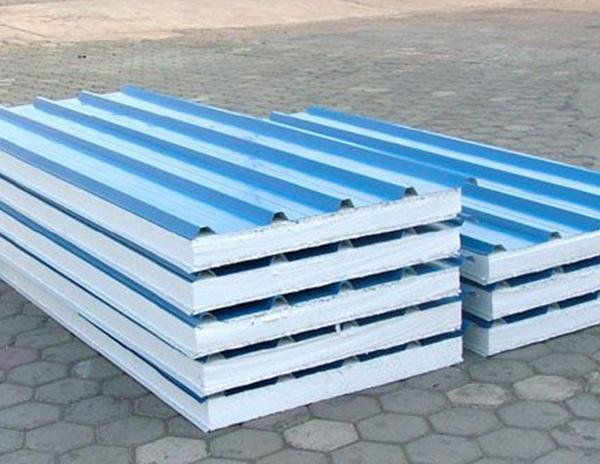
What is continuous insulation?
Continuous insulation (CI) adds a layer of insulation without breaks. It covers the whole building, stopping heat from escaping or entering. Unlike older methods, CI removes gaps that let heat pass through. This helps save energy and meet modern building rules.
Using CI makes buildings more energy-efficient and eco-friendly.
How EPS panels stop thermal bridging
EPS sandwich panels are great at stopping thermal bridging. They have a solid foam core that blocks heat movement. This foam stops heat from passing through steel parts like studs. Steel studs often cause heat loss in buildings.
Buildings with CI, like EPS panels, use up to 46% less energy. Placing insulation outside steel studs makes it work even better. The high R-value of EPS panels also keeps heat from escaping. This makes them a smart choice for today’s construction needs.
Why reducing heat loss matters
Stopping heat loss has many benefits for buildings. Good insulation keeps rooms warm or cool without much heating or cooling. This lowers energy bills and makes homes more comfortable.
Energy checks often find problems like air leaks or bad insulation. Fixing these with EPS panels can save a lot of energy. Installing insulation properly and sealing air gaps improves its performance. This leads to long-term savings and helps the environment.
Moisture Resistance and Durability

How EPS foam resists moisture
EPS foam resists water because of its closed-cell design. This structure stops water from soaking in, keeping it insulating well. Water can enter through tiny gaps, vapor, or liquid movement.
A study says EPS foam absorbs more water than XPS over time. Still, it stays strong against water damage. This makes it a good choice for long-lasting, eco-friendly buildings needing strong insulation.
Cement layers protect the foam
The cement layers in EPS panels protect the foam inside. They stop damage and block water from getting in. Research shows adding materials like silica fume and fly ash makes EPS concrete stronger.
Researcher | Key Findings |
|---|---|
Pan et al. | |
Chen | Silica fume boosts bonding, increasing strength by about 15%. |
Ran | Micro silica powder raises EPS concrete strength by 20%. |
Dong et al. & Hu et al. | Triethanolamine and epoxy resin improve bonding and strength. |
Chen | Polyvinyl alcohol forms a tough shell, making EPS stronger. |
These improvements help EPS panels stay strong, even in tough weather. The cement layers also reduce cracks and make buildings last longer.
Why moisture resistance helps insulation
Moisture resistance keeps EPS panels insulating well. Wet insulation loses its ability to block heat. EPS foam avoids this by staying strong and keeping its shape, even when wet.
Tests by EMTL show EPS insulation keeps 95–97% of its thermal power in good roofs. Its water-repelling feature stops mold, keeping indoor air healthy. The closed-cell design also keeps it stable, making it great for eco-friendly, energy-saving buildings.
Compliance with Building Codes and Standards
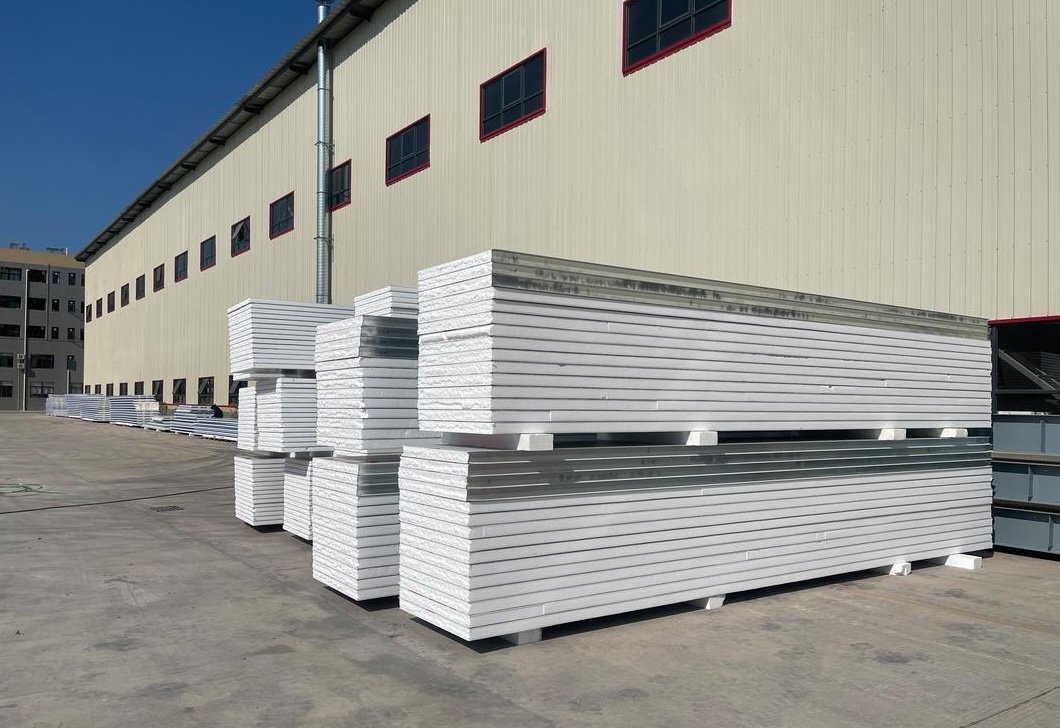
Thermal insulation standards in construction
Thermal insulation must follow strict rules for safety and energy use. These rules explain how materials should work in different situations. For example:
ASTM C578 lists the strength and heat-blocking ability of rigid foam.
ASTM E 84 describes tests for fire safety, like flame spread and smoke levels.
EPS insulation, like Versico’s InsulFoam Flat EPS, meets these rules. It provides steady R-values, resists water, and lasts a long time. Picking materials that meet these standards ensures your projects follow modern building rules.
How EPS cement sandwich panels meet compliance
EPS cement sandwich panels are made to meet global and local building rules. They follow ISO standards, proving they are high-quality and reliable. The EPS core meets ASTM C578, ensuring strong insulation and durability.
Compliance Aspect | Description |
|---|---|
ISO Standards | Panels meet global rules for design and production. |
ASTM C578 | Confirms the EPS core is strong and insulates well. |
Building Codes | Panels follow local rules, making them useful for many projects. |
EPS panels also meet fire safety rules like Euroclass B-s1-d0 and DIN 4102-1. These show the panels resist catching fire and limit smoke, making them safe for homes and businesses.
Advantages of using compliant materials
Using materials like EPS panels has many benefits. First, they help your projects follow safety and legal rules, avoiding fines. Second, they improve energy savings by keeping heat in or out. For example, EPS panels have U-values as low as 0.22 W/m²K, meeting North American energy codes like ASHRAE 90.1.
Advantage | Description |
|---|---|
Low Global Warming Potential (GWP) | Helps the planet by lowering environmental harm. |
Embodied Carbon Reduction | Cuts carbon by 94%, supporting green building efforts. |
Thermal Performance | Keeps R-value steady for better insulation. |
Moisture Performance | Absorbs little water, avoiding damage from freezing or thawing. |
Durability | Lasts a long time, saving money for builders. |
Choosing EPS panels means following building rules while helping the environment and saving energy over time.
EPS sandwich panels are a great pick for insulation. They work well and save energy for a long time. With R-values over 20, they block heat better. This keeps indoor spaces comfy and cuts energy use. Their water resistance and rule-following design make them perfect for eco-friendly buildings.
EPS is popular because it’s light and very strong.
SIPs with EPS cores insulate better than regular walls.
Using EPS panels makes homes cozy, lowers bills, and helps the planet.
FAQ
What are EPS cement sandwich panels used for?
EPS cement sandwich panels are used for walls, roofs, and floors. They work in homes, offices, and factories. These panels keep heat in or out, resist water, and last long. They are perfect for energy-saving buildings.
How do sandwich panels improve energy efficiency?
Sandwich panels save energy by stopping heat from moving. They have an EPS foam center and strong cement layers. This design keeps indoor temperatures steady and lowers heating or cooling needs.
Are sandwich panels environmentally friendly?
Yes, sandwich panels are good for the environment. They cut energy use and have a low impact on the planet. Their long life means less waste, making them a smart green choice.
Can sandwich panels withstand extreme weather?
Sandwich panels handle tough weather well. The foam core keeps water out, and the cement layers add strength. They protect buildings from heavy rain, snow, and heat.
How long do EPS cement sandwich panels last?
EPS cement sandwich panels last a very long time. They resist water, mold, and damage. If installed and cared for properly, they can work for decades without losing their insulation ability.



